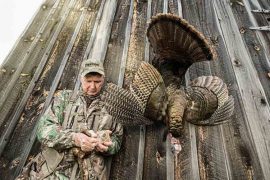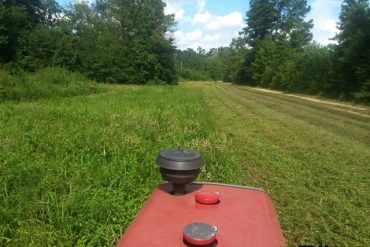Every home venison chef needs at least one cast-iron skillet, one of the most legendary and time-tested cooking utensils ever created.
If you had to choose one and only one cooking tool to use the rest of your life as a home venison chef, what would you select? The options are extensive indeed.
Certainly a grill, of either the charcoal or gas variety, would get plenty of votes. There’s nothing like the juicy flavor of a quick-seared venison chop, sirloin or tenderloin. A grill would also take care of kabobs, burgers, brats and fajitas. But you would have an issue preparing dishes combining liquids with drier cuts of meat such as flanks; shoulder, rump or leg roasts; and briskets and stews.

Crockpots would generate some votes, and for good reason: ease of use. There’s nothing better than loading up a slow cooker early in the morning, turning it to low for an all-day slow-cook, and coming home to the savory aroma of a pot roast, stew, chili or other venison creation permeating the house. But most of us would miss the flavor provided when grilling or searing more tender cuts of venison.
A Dutch oven might get some votes. Who doesn’t love soups, stews and chili? A pot roast is also fair game for this unique vessel, as are a variety of other moisture-based venison dishes. You can use a Dutch oven on the stovetop, stick it in the regular oven, or do both with the same recipe. When crafted in cast-iron, a Dutch oven comes close to being the perfect venison-cooking tool.
But there’s one tool that combines the best aspects of all these cooking tools: the old-fashioned cast-iron skillet.
It’s the most versatile venison-cooking tool you can own. From quick-searing thin and delicate strips of tenderloin for one minute to simmering a tough flank steak all afternoon, or from building a hearty pan stew for a hot meal on a cold winter’s evening to browning ground venison for taco meat or spaghetti sauce, and almost every imaginable use in-between, a cast iron skillet truly is the one venison cooking tool every home chef must have in his or her kitchen.
Let’s explore every aspect of the black cast-iron skillet: its history, benefits and versatility; how to select a good one to buy; and how to take care of it so it will last a lifetime. Then we’ll look at a dozen starter ideas to give you a flavor of all you can do with this delightful, do-it-all cooking tool.
HISTORY, BENEFITS AND VERSATILITY
Cast iron cookery first began in the Far East over 2,000 years ago. The concept slowly made its way to Europe, probably through trade, and by the 16th century the Dutch were using sand to create molds in which to pour molten iron and cast cooking pots — today known as Dutch ovens. Europeans in turn brought cast iron pots, pans and utensils to the New World.
In American history, George Washington’s mother thought enough of her cast iron cookware pieces to bequeath them with special mention in her will. And on the 1804-06 Journey of Discovery expedition, Lewis and Clark made plenty of room for cast iron cookware (despite its weight) in their supplies. The crew ate many a meal of whitetail, mule deer, pronghorn and elk venison fried or stewed in cast iron.
The technique for casting kitchenware is much the same today as it was centuries ago: A mold (today made of plaster and sand) is created, molten iron is poured in and allowed to cool, then the mold is busted off and the resulting skillet, pan or pot is sanded down.
No matter what form it takes, cast iron is an ideal material on which (or in which) to cook. It holds heat well, distributes heat evenly across the cooking surface, resists allowing “hot spots” to form, and is highly durable.
In addition to durability, cast iron offers incredible versatility, and works well for almost all kinds of cooking. You can take cast iron from stovetop to oven, or use it on a grill grate or over the coals of a campfire. A cast iron skillet can sear, brown, fry, simmer, sauté, bake, stew, boil, steam … and perform almost any other cooking technique you can imagine.
IMPORTANT FEATURES AND
BUYING CONSIDERATIONS
If you’re looking for your first cast iron skillet, or adding one to your collection, take these considerations into account:
* The heavier the skillet, the better. A thick base and walls work to distribute heat better, eliminate hotspots and hold heat longer.
* Only opt for a one-piece unit cast from a continuous piece of iron. This is the…





